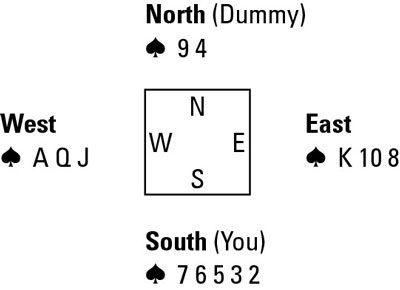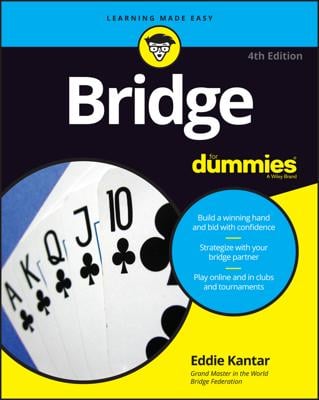If your bridge hand contains only small cards for a given suit, don’t give up hope! Having any seven cards between the two hands in a game of bridge may mean an extra trick for you — if your opponents’ cards are divided 3-3.
The hand in this image shows you how any small card can morph into a winner when your opponents’ cards are split evenly.

You have seven cards between your hand and the dummy, the signal that something good may happen for your small cards. Of course, you’d be a little happier if you had some higher cards in the suit (such as an honor or two), but beggars can’t be choosers.
Remember Cinderella and how her sisters dressed her up to look ugly even though she was beautiful? Well, those five cards in South are like Cinderella — you just have to cast off the rags to see the beauty underneath:
Say you lead the ♠2, and West takes the trick with the ♠J.
Later, you lead the ♠3, and West takes that trick with the ♠Q.
You’ve played spades twice, and because you’ve been counting those spades, you know that your opponents have two spades left.
After you regain the lead, you again lead a rag (low card) — in this case, the ♠5.
Crash, bang! West plays the ♠A, and East plays the ♠K. Now they have no more spades, and the two remaining spades in your hand, the ♠7 and ♠6, are winning tricks.
You conceded three spade tricks (tricks they had coming anyway), but established two tricks of your own by sheer persistence.

